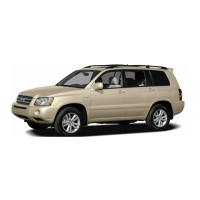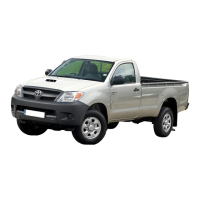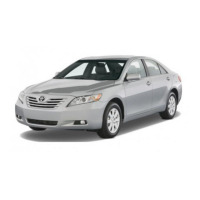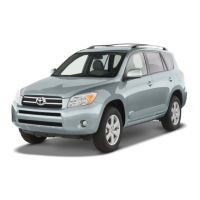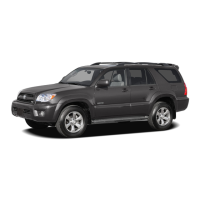’07 HIGHLANDER HV_U (L/O 0608)
328
2007 HIGHLANDER HV from July ’06 Prod. (OM48685U)
! Take all necessary safety measures
to ensure that water damage to the
hybrid battery, hybrid system or
other components does not occur.
Water entering the engine compart-
ment may cause severe damage to
the hybrid system. Water entering
the interior may cause the hybrid
battery stowed under the rear seats
to short circuit.
Water can wash the grease from
wheel bearings, causing rusting and
premature failure, and may also en-
ter the transaxle case, reducing the
gear oil’s lubricating qualities.
! Sand and mud that has accumulated
in brake drums and around brake
discs may affect braking efficiency
and may damage brake system com-
ponents.
! Always perform a maintenance in-
spection after each day of off−road
driving that has taken you through
rough terrain, sand, mud, or water.
For scheduled maintenance informa-
tion, refer to the “Scheduled Main-
tenance Guide” or “Owner’s Manual
Supplement”.
Make sure your coolant is properly pro-
tected against freezing.
Only use “Toyota Super Long Life Coolant”
or similar high quality ethylene glycol
based non−silicate, non−amine, non−nitrite,
and non−borate coolant with long−life
hybrid organic acid technology. (Coolant
with long−life hybrid organic acid
technology is a combination of low
phosphates and organic acids.)
See “Checking the coolant level” on page
388 in Section 7−2 for details of coolant
type selection.
For the U.S.A.—“Toyota Super Long Life
Coolant” is a mixture of 50% coolant and
50% deionized water. This coolant pro-
vides protection down to about −35"C
(−31"F).
For Canada—“Toyota Super Long Life
Coolant” is a mixture of 55% coolant and
45% deionized water. This coolant pro-
vides protection down to about −42"C
(−44"F).
NOTICE
Do not use plain water alone.
Check the status of the hybrid battery.
See page 4 for the status of the hybrid
battery. If the hybrid battery is discharged,
the hybrid system will not start up.
Check the condition of the 12 volt bat-
tery and cables.
Cold temperatures lower the performance
of the 12 volt battery, so it must be in top
shape to provide enough power for winter
starting. Section 7−3 tells you how to
visually inspect the 12 volt battery. Your
Toyota dealer and most service stations
will be pleased to check the charge level.
Make sure the engine oil viscosity is
suitable for the cold weather.
See page 386 in Section 7−2 for recom-
mended viscosity. Leaving a heavy sum-
mer oil in your vehicle during winter
months may cause harder starting. If you
are not sure about which oil to use, call
your Toyota dealer—they will be pleased
to help.
Keep the door locks from freezing.
Squirt lock de−icer or glycerine into the
locks to keep them from freezing.
Winter driving tips

